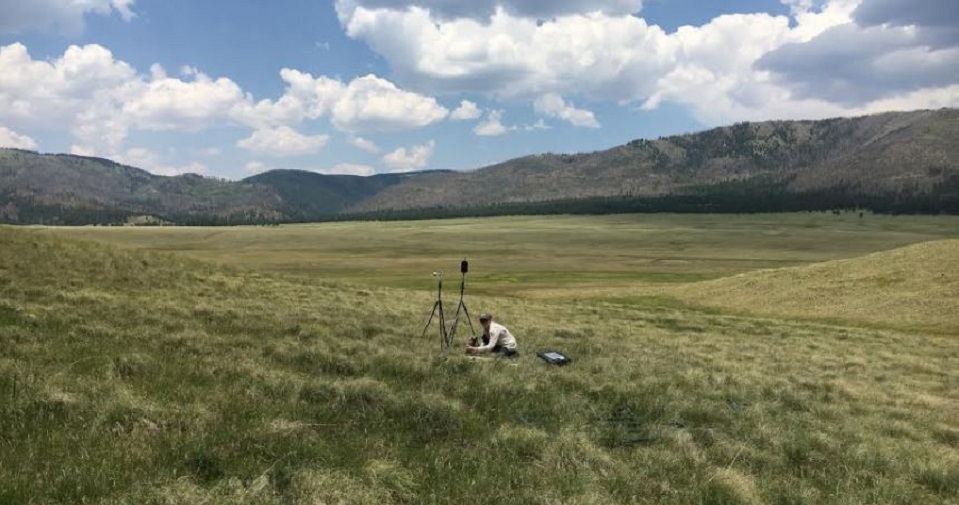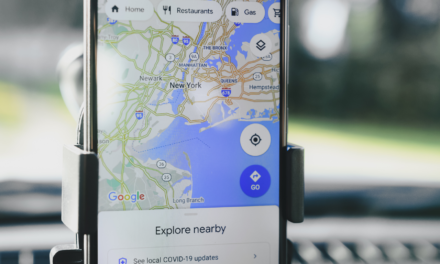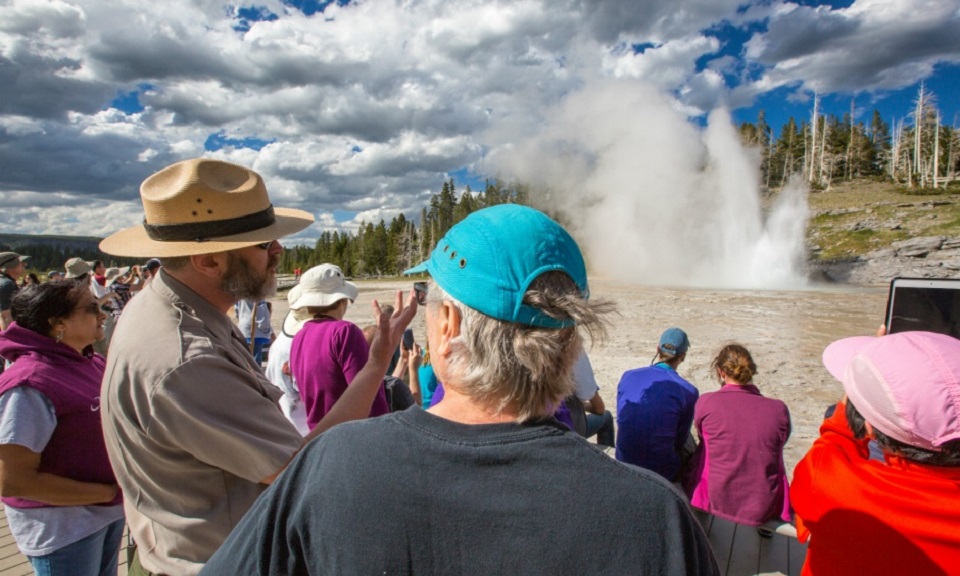NPS Photo
A solar eclipse is undoubtedly one of the most visually stunning celestial events. In the path of totality, stars and planets will emerge and the sun’s corona will gleam in the dark sky. Temperatures will cool, and the daytime sounds we hear may shift as animals respond to the unexpected change in their environment.
The types of changes to the soundscape that occur during an eclipse are relatively unknown. What will the eclipse sound like? Will insects and birds that sing during the day fall silent? Will animals that are only active at night get vocal? To document these changes, National Park Service scientists will make audio recordings in 17 parks spanning nearly 2700 miles across the United States.
The project is part of Eclipse Soundscapes, a multi-institutional study from the Smithsonian Astrophysical Observatory and NASA Heliophysics Education Consortium with the goal of introducing acoustic aspects of the eclipse to a wider audience. Most of the parks involved are located on the eclipse path and will experience a near or total eclipse of the sun. Two of the parks are located outside the path, and will give researchers audio information on the effects of partial eclipse conditions. Combined, the NPS sites span a wide range of plant and animal communities.
“It is clear that animals respond to the eclipse,” said participating NPS scientist Dr. Kurt Fristrup with the Natural Sounds and Night Skies Division. “The question is going to be: how much of that response is detectable acoustically? We could see dramatic changes. Past research has studied individual sites during an eclipse, and a few papers have been published, but no one has looked at this phenomenon on a continental scale.”
Audio recording equipment placed in biologically diverse park environments removed from wind and human interference will capture sounds on the day of the eclipse as well as the two days preceding and following the event. Subsequent analysis of the data will quantify how the soundscape changed on the day of the eclipse.
Fort Laramie National Historic Site is one of the study sites. The Fort is a former trading post and military garrison situated in a gently rolling valley at the confluence of the Laramie and North Platte Rivers in southeast Wyoming. The eclipse is bringing attention to this and other parks located on the path of totality, and with it, opportunities to learn about their unique character.
“Fort Laramie National Historic Site welcomes the opportunity to participate in the Eclipse Soundscapes Project, which will enhance our natural resource monitoring data,” said Superintendent Tom Baker. “Being a park that has been intensely focused on its cultural resources for most of its 79 years, I take every advantage to document and highlight the outstanding natural resources that have been ‘hiding’ here the whole time. Our visitors are not only deeply interested when we present that side of the story, but pleasantly surprised at the diversity of resources at the fort.”
Eclipse Soundscapes is the brainchild of solar astrophysicist Dr. Henry “Trae” Winter III at the Harvard-Smithsonian Center for Astrophysics in Cambridge, Massachusetts. In order to provide tools for people who are blind and visually impaired to experience the eclipse through sound, Winter has engaged institutional partners to make this exceptional event accessible to a more inclusive audience. Participating institutions include the National Park Service, NASA, the Smithsonian, Brigham Young University, and the National Center for Accessible Media.
“Science works when everyone participates, because the more people who participate, the stronger it becomes,” said Winter. “You have to have different vantage points and new ideas, and think about things in different ways. I believe bringing in these diverse groups, from visually impaired people to institutions and citizen scientists will actually strengthen science.”
The Eclipse Soundscapes app gives users opportunities to visualize the eclipse in real time through touch with Rumble Map, an interactive smartphone tool that uses vibration to convey degrees of brightness of the eclipse at various stages, and audio descriptions from the National Center for Accessible Media.
The project also invites citizen scientists to participate by collecting their own audio data during the eclipse. The recordings will be part of a free, open source, sound database that anyone can access and use in their work. The NPS celebrates citizen science this August, a time for recognizing innovative citizen science projects taking place in parks throughout the year, and encourages park visitors to lend a hand by participating in Eclipse Soundscapes.
Sounds in national parks are part of a web of natural and cultural resources worth saving. To this end, NPS scientists regularly monitor the variety and qualities of sounds that define park soundscapes. The Eclipse Soundscapes Project is a natural extension of this work that will increase understanding of how the solar eclipse affects soundscapes and other natural resources in parks.








